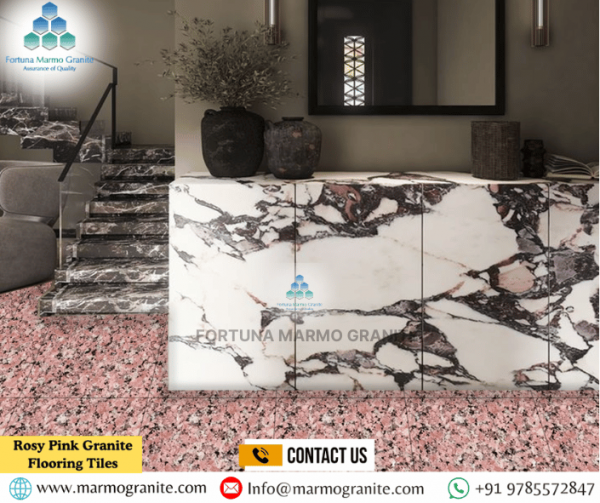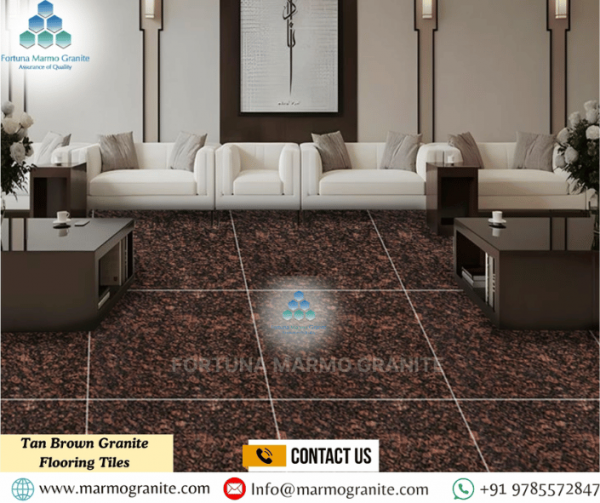The Right Way to Clean Granite Floors Without Scratches or Stains
Granite flooring Tiles Supplier are more than just a surface to walk on—they're a statement of sophistication, strength, and timeless beauty. With their unique natural patterns and rich textures, granite flooring adds a touch of luxury to any setting, whether it's a cozy living room, a sleek modern kitchen, a lavish bathroom, or the polished lobby of a high-end commercial building. In contrast, The stone's exceptional durability makes it a favorite for areas that see heavy foot traffic, but its elegance demands proper care. While granite is known for its resilience, it isn't immune to damage. Using the wrong cleaning products or techniques can lead to unsightly scratches, dullness, and even staining, particularly if spills are left unattended or acidic solutions are used.
Moreover, Many people assume a quick sweep and an occasional mop with household floor cleaner is enough, but granite requires a more specialized approach. Harsh chemicals and abrasive tools can strip away its natural shine and compromise its integrity over time. Consequently, That's why it's crucial to understand the right methods and products to use. In addition, This comprehensive guide is designed to help you preserve the luster and longevity of your granite floors by showing you how to clean them safely and effectively. Subsequently, From daily dusting tips to deeper weekly maintenance routines, we'll cover everything you need to know to keep your granite flooring in pristine condition for years to come—enhancing not only the look of your space but also the value of your property.
Common Mistakes to Avoid While Cleaning Granite Floors
Before we discuss the right way to clean, let's cover what not to do. Many homeowners unintentionally damage their granite floors by making the following mistakes:
- Using acidic or abrasive cleaners like vinegar, lemon juice, or bleach
- Scrubbing with rough materials such as steel wool or hard-bristled brushes
- Skipping dust removal, leading to micro-scratches from dirt particles
- Letting spills sit too long, especially liquids like wine, oil, or juice
- Neglecting regular sealing, leaving the stone exposed to moisture and dirt
Step-by-Step Guide: The Right Way to Clean Granite Floors
- Daily Maintenance – Gentle and Consistent
Dry Dusting or Sweeping
Moreover, Use a microfiber mop or soft broom to remove dust, sand, and debris. This prevents scratching from particles being ground underfoot.
Spot Cleaning Spills
In addition, Wipe up spills as soon as they happen. Use a soft cloth and warm water to gently blot the area—never scrub.
Mild Soap Solution
Yet, Mix a few drops of pH-neutral dish soap with warm water in a bucket. Dampen a soft mop and wipe the floor, being careful not to oversaturate the surface. Dry immediately with a clean microfiber cloth.
- Weekly Cleaning – Deeper But Still Gentle
Choose the Right Cleaner
Opt for a granite-safe cleaner or make your own using:
- 1 tablespoon of pH-balanced dish soap
- 1 quart of warm water
Avoid any cleaners with acid, ammonia, or bleach.
Use a Soft Mop
Consequently, A flat microfiber mop or sponge mop works best. Avoid string mops or anything abrasive.
Rinse and Dry
In contrast, After cleaning, mop again with clean water to remove soap residue. Always dry with a microfiber towel to avoid water spots.
- Monthly and Seasonal Deep Cleaning
Inspect the Sealant
In addition, Sprinkle a few drops of water on the floor. If the water beads up, your sealant is intact. If it absorbs into the stone, it's time to reseal.
Deep Clean with Granite-Safe Products
Yet, Use a commercial granite floor cleaner or make your own with a few drops of isopropyl alcohol, warm water, and a touch of dish soap. Mop gently, and ensure full drying.
Polish for Extra Shine
In contrast, Use a granite polish formulated for flooring (not countertops). Apply lightly and buff with a clean, dry cloth.
How to Remove Stains from Granite Floors
- Organic Stains (Coffee, Tea, Wine, Food)
Make a baking soda poultice:
- Mix baking soda and water into a paste.
- Apply to the stain and cover with plastic wrap.
- Let sit for 24 hours, then rinse and dry.
- Oil-Based Stains (Grease, Cooking Oil, Lotions)
Use a mix of baking soda and acetone. Follow the same poultice method as above.
- Rust or Metal Stains
Use a specialized granite rust remover. Do not use generic rust removers—they may be too harsh for stone.
- Water Spots or Etching
Though granite resists etching better than marble, hard water can still leave marks. Use a granite-safe polishing compound to restore shine.
Tools and Products You Should Use
Cleaning Tools
- Microfiber mop or cloth
- Soft-bristle broom
- Sponge mop
- Non-abrasive scrub pad (optional)
Safe Cleaning Solutions
- pH-neutral dish soap
- Granite-safe commercial cleaner
- Homemade solutions (baking soda, isopropyl alcohol, etc.)
Granite Floor Sealing: A Critical Part of Maintenance
Tips to Keep Your Granite Floors Looking New
- Use mats and rugs at entrances to trap dirt and moisture.
- Place pads under furniture to prevent scratches.
- Remove shoes indoors, especially high heels or shoes with grit.
- Control humidity to avoid expansion and cracking.
- Clean regularly, even if the floor looks clean—dust and particles are always present.
Professional Granite Cleaning: When to Consider It
If your granite floor has deep stains, scratches, or a dull finish that home cleaning doesn't fix, it might be time to call a professional. Stone care specialists offer services like:
- Deep steam cleaning
- Mechanical polishing
- Honing or resurfacing
- Professional sealing
Conclusion
Indian Granite Supplier Granite floors are a timeless addition to any space, offering unmatched durability and natural elegance. The Right Way to Clean Granite Floors However, maintaining their beauty requires the right approach—one that emphasizes gentle care over aggressive cleaning. By using pH-neutral cleaners, soft microfiber mops, and avoiding acidic or abrasive substances, you can ensure your granite flooring stays free from scratches, stains, and dullness. Regular sweeping, occasional deep cleaning, and prompt attention to spills are essential habits that go a long way in preserving the stone's luster and integrity. In addition, The Right Way to Clean Granite Floors It's not just about cleaning; it's about respecting the natural characteristics of granite and enhancing its longevity. Moreover, Whether you're managing granite in a residential or commercial setting, a careful and consistent maintenance routine can keep your floors looking luxurious for years to come.
Moreover, At Fortuna Marmo Granite, we understand the value of proper granite care. As a trusted name in natural stone, we offer expert guidance, premium-quality products, and tailored solutions to help you protect and enhance your investment. Although, Let us help you keep your granite floors in pristine condition—the right way.




